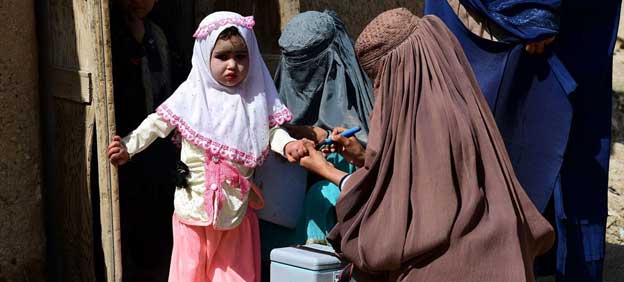Why We Must Remember Afghanistan

KABUL, Mar 17 (IPS) - While all eyes are on Ukraine, Afghanistan’s humanitarian crisis has been forgotten. But only with international aid can Afghans build a future.
When US President Joe Biden delivered his State of the Union Speech on 2 March, the eyes of the world were understandably locked on Ukraine. As he waxed lyrical about foreign and domestic successes under his administration, Biden emphasised ongoing American support for the Ukrainian people, even as nearly half a million Ukrainian refugees fled fighting in their backyard.
But there was another crisis that was glaringly absent from his address: the end of America’s two-decade war in Afghanistan, and the resulting humanitarian disaster. Although his silence on Afghanistan wasn’t surprising — the American withdrawal in August of 2021 was an optics disaster — Biden’s omission sent a clear message. The US, and much of the international community, has forgotten Afghanistan.

While images of Afghans falling from the landing gear of aeroplanes and mothers handing their babies over concertina wire at Kabul airport captivated the world for a fleeting moment, once the Taliban rolled into Kabul, the story was already on the wane for many international observers.
A broken economy fuelled by American mistakes
The chaotic events of August 2021 sent Afghanistan's already flagging economy into freefall. Inflation skyrocketed as residents in major cities across the country scrambled to withdraw their savings in cash.
ATMs quickly ran dry and cash transfer services closed completely or enforced strict withdrawal limits that forced the lucky few to spend days or even weeks waiting in line to take out tiny increments of their savings. While unemployment soared, the cost of living also skyrocketed, pushing large, multi-generational families to breaking point.
Biden announced that half of the frozen $7bn would be reserved not for the Afghan people, but for settling billions in lawsuits brought against the Taliban by the families of 9/11 victims.
When the Taliban entered Kabul on 15 August 2021, the US Federal Reserve froze $7bn in assets belonging to Afghanistan's central bank, Da Afghanistan Bank (DAB). Although this was meant to prevent the Taliban from accessing the funds directly, the result was the parting of thousands of Afghan families and business owners from their savings.
In the months following, prices continued to rise, and families continued to struggle waiting for the money to be released. Then, on 11 February 2022, Biden announced that half of the frozen $7bn would be reserved not for the Afghan people, but for settling billions in lawsuits brought against the Taliban by the families of 9/11 victims.
The announcement caused uproar, even amongst some of the very families who were set to benefit from the announcement. Even now, the US government has failed to clearly outline how the money will be used despite the dire needs on the ground.
Meanwhile, the international community is stuck in limbo, trying to work out how it can get money and aid into the hands of struggling Afghans without directly financing the Afghan government. Organisations like the ICRC have started to directly pay the salaries of doctors and health staff, so that hospitals and clinics can continue to function.

Although it’s been slow, some progress has been made on this front. On 25 February 2022, the US issued the latest in a series of ‘General Licences’, aimed to ‘ensure that US sanctions do not prevent or inhibit transactions and activities needed to provide aid to and support the basic human needs of the people of Afghanistan’.
Although this greatly expands the latitude of American businesses and organisations to interact with and contribute to the Afghan economy, it does not untangle Afghanistan’s dysfunctional domestic banking sector.
Less severe than expected
Despite the economic upheaval, in March of 2022, life in the capital appears deceptively normal. The city’s oldest bazaar still hums with customers, and groups of young women chat as they cross the road near Kabul university, dodging taxis and motorcycles.
Young kids still traverse lines of stalled peak-hour traffic, selling pens and gum to bored drivers. Bored looking traffic police wave cars through packed intersections, and ice cream sellers patrol the shuffle their carts along the sidewalks. It’s not the image many would expect.
Many of the most severe restrictions that people expected the Taliban to impose have not yet materialised. Many restaurants still play music. Women walk the streets of Kabul without burkhas or male guardians, and many men are still clean shaven — although there are certainly more stubbly chins than before.
Women attend (gender segregated) classes at university, and girls' high schools are scheduled to reopen when the school year begins in spring (although this will have to be seen to be believed. Will these developments stick? Are more severe restrictions only a matter of time? Some are sure that tighter restrictions are coming, others are cautiously optimistic.
If the Taliban cannot provide jobs and income for their fighters, they risk losing these men to other conflict actors with deeper pockets.
Despite some small concessions, the outlook for women is by no means sunny. Women’s rights activists have been jailed without explanation. Several have disappeared. Although some women have returned to public life in larger cities like Kabul and Mazar-e-Sharif, others remain at home, fearful that the Taliban’s tact may quickly change.
Security across the country has undoubtably improved. Vast stretches of road that were impassable due to fighting and IEDs seven months ago are now clear. But there are signs that the respite from conflict may be short lived.
If the Taliban cannot provide jobs and income for their fighters, they risk losing these men to other conflict actors with deeper pockets. This includes the Afghan offshoot of ISIS, known as Islamic State Khorasan Province (ISKP), who claimed numerous attacks in the eastern provinces of Nangarhar and Kunar over the past seven months, including direct attacks against Taliban forces.
A looming catastrophe
In the first week of March, Taliban security forces began an unprecedented campaign of house-to-house searches across Kabul and several other provincial capitals, moving methodically from neighbourhood to neighbourhood as panicked messages circulated on social media.
Many searches were polite and cursory, others were violent. Although the searches were intended to seize private weapons that could be used by criminals, the operations demonstrated the government’s willingness to cast personal privacy and property rights by the wayside if they wish to.
Press freedom has undeniably been rolled back. Some Afghan journalists, both male and female, have been detained, others tortured. Although most national broadcasters are still operating, overt criticism of the current government has largely disappeared from local media.
In January the UN warned that 23 million people are facing extreme food insecurity — over half of the entire population.
Roughly 75 per cent of the Afghan population lives in rural districts, rather than in cities. In these areas, many of which saw constant fighting over the past two decades, peace is a welcome change. But rural Afghans are in desperate need of food, cash, and other basic forms of aid.
And although fighting has stopped, hunger can be just as deadly as bullets and IEDs. A UNDP study conducted in December of 2021 found that a staggering 97 per cent of Afghans may be living in poverty by the end of 2022. In January the UN warned that 23 million people are facing extreme food insecurity — over half of the entire population.
Short of another bloody military intervention, the Taliban will remain in control of Afghanistan in the near term, this much is clear. It is also clear that the situation is very far from ideal, especially for woman, and those who wish to chart a more inclusive and liberal course for their country.
The Taliban’s treatment of woman, and ethnic minorities has, in many cases been appalling. But neither is the situation the charred hellscape that some would have the rest of the world believe. To acknowledge the realities may give a sense of moral superiority to some, but those who demand an all or nothing approach to dealing with the Taliban are seldom the ones who will pay the true cost on the ground.
Many Afghans are already forging ahead, but they cannot continue if the rest of the world turns away.
Kern Hendricks is an independent photojournalist covering issues of social upheaval and the effects of long-term conflict. He has been based in Kabul, Afghanistan since 2017.
Source: International Politics and Society, based in the Friedrich-Ebert-Stiftung’s Brussels office.
IPS UN Bureau
Follow @IPSNewsUNBureau
Follow IPS News UN Bureau on Instagram
© Inter Press Service (2022) — All Rights Reserved. Original source: Inter Press Service
 Global Issues
Global Issues